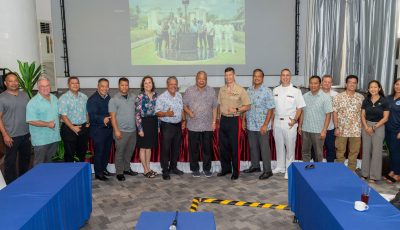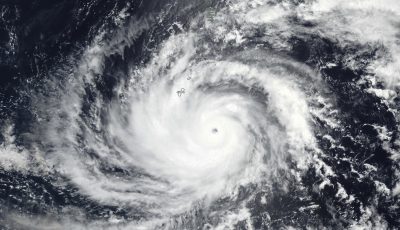88 fun things to see and do in Guam: Part 2

19. Latte Stone Park. Found nowhere else in the world, latte stones are pillars on which ancient Chamorro houses were constructed as early as 500 A.D. They have become enduring landmarks of Guam and the CNMI, as well as a symbol of Chamorro identity. One of the good places in Guam to marvel at these ancient pillars is the Latte Stone Park in central Hagatna. Don’t forget to snap some photos.
Latte Stone Park, renamed the Sen. Angel Leon Guerrero Santos Latte Memorial Park in 2005, contains eight latte stones that the U.S. military transferred from their original locations in Guam’s southern interior as new military bases were being built in these locations.
Original latte stones were composed of two pieces: a supporting column made of coral limestone, capped by a hemispherical stone with the flat side facing up and made of coral heads. Latte stones were believed to be placed in parallel rows of three to seven latte stones per row.
20. Top of the Reef. Located atop Guam Reef Hotel, this cocktail lounge is one of the best places to be for nighttime vistas Tumon has to offer, topped with good cocktails and drinks, great food, and mellow music. Top of the Reef is one of the more romantic spots I’ve ever been to in Guam, and I highly recommend it.
21. Inarajan Pools. Feel like diving in or taking a plunge? Head to Inarajan Pools. A child or adult jumping off from a diving platform is one of the most photographed moments at these natural tide pools that are also great for swimming and snorkeling.
Serving as natural shields from big waves are coral outcroppings rising 15 to 20 feet. Even in its shallowest parts, one could see different sea life forms. The spot also boasts of pavilions and barbecue pits for that complete island picnic experience.
22. Tumon Bay. Stroll its full length in the morning or by sunset. Dubbed “Guam’s favorite coastal playground,” Tumon Bay has the best stretch of beaches on the whole island with its white sands, sparkling azure waters, and towering green cliffs. Day or night, Tumon Bay always has something to offer visitors-swimming, sun tanning, sipping a drink at a beach bar, partaking in a sumptuous meal at a restaurant right along the beach while listening to island music.
Because it is protected by a natural reef that stretches out about 1 mile from the beach shore, Tumon Bay is ideal for swimming, snorkeling, windsurfing, kayaking, and other water activities.
Lining Tumon Bay are some of the island’s most popular hotels such as Hyatt Regency Guam, Guam Reef Hotel, Outrigger Guam Resort, Hilton Guam Resort & Spa, Nikko Hotel, Guam Marriott Resort & Spa, Pacific Islands Club, and Fiesta Resort Guam. These hotels, along with beach bars and restaurants, illuminate Tumon Bay’s shore at night.
23. Tower of London. This is an English pub in Tumon known for its widest selection of beers from all over the world.
24. Invasion Route and Tony’s Falls combo hike. Once again, if you’re into hiking or walking, join the Boonie Stompers and “hike the way locals do” in Guam. The non-profit group Boonie Stompers offers guided hikes to waterfalls, mountains, caves, beaches, snorkeling sites, latte sites, World War II spots, and other historic and cultural sites on Saturday mornings.
In one of those Guam visits, I got to join the combo hike to Invasion Route and Tony’s Falls, which took four hours and 1.3 miles to complete. The hike retraced the July 21, 1944, route of the U.S. Third Marine Division during World War II from Asan to the heights above. We hiked all the way up to the Asan Bay Overlook, before hiking down to the refreshing Tony’s Falls.
Boonie Stompers advertises that particular hike as “difficult.” But when I hit my worst state-which happened a few times in the course of that exhausting hike because of steep slopes, the scorching heat, sword grasses, lack of sleep and all the other paybacks from the previous night’s partying-I told myself the hike should have been categorized “deadly”-at least for me.
I am breaking down at least two portions of that hike in Nos. 25 and 26.
25. Asan Bay Overlook. Hiking the Asan Bay Overlook was grueling. But every time I looked back to where we were and looking down at the ocean view from afar, it made the hike more bearable.
It is said that Asan Bay Overlook is one of the best Guam tourist attractions in Apra Harbor, “providing visitors with a view that the Japanese had as the American soldiers hit the beach at Asan to take back Guam.” But even the U.S. military personnel I was hiking with that morning were saying, “It must have been a myth,” referring to the historic route of the U.S. Third Marine Division in July 1944 and to think that they were in full military gear at the time.
When we reached the overlook, I saw tourists getting off tour buses near the World War II memorial site and I said to myself, “They got it so easy!” Asan Bay Overlook is a regular stop for tour buses, mainly for the spectacular views and the “carved bronzed monuments dedicated to the American soldiers and Chamorro civilians, and a World War II memorial site.” We were then off to our next stop: Tony’s Falls.
26. Tony’s Falls. The hike downhill was still quite challenging. But as always, the reward was a sweet, refreshing treat of Tony’s Falls. Hikers enjoyed cooling off, diving in, taking photos or simply taking in the calming view. The Invasion Route and Tony’s Falls hike combo did not only put our stamina to the test but also gave us lessons in history, culture, and the environment.
27. Art exhibits. Not a week passes by without art or arts and crafts exhibits (including those of my friend and former editor, Mar-Vic Cagurangan), so make sure to check out the event calendars.
28. The Beach at Gun Beach. This is undoubtedly one of the best beach bars-and the largest-in Guam, and they’re just about to celebrate their first year in July. The Beach features large main decks overlooking the beach below, beachfront dining, live entertainment and a full service bar and grill made more inviting by the crashing sound of the surf and tropical breezes at night.
29. Meskla. A friend of mine insisted last week that Meskla in Hagatña should be on this list early on because it is “Guam’s only Chamoru fusion restaurant.” Award-winning local chef Peter Duenas, also host of “Outdoor Chef,” puts a unique twist on old recipes with modern techniques and flavors from around the world. “Meskla” means “mix” or “blend” in Chamorro.
And since we’re talking about Chef Peter Duenas, he is scheduled to appear on Saipan as host of “Saipan’s Next Top Chef Competition” on July 28 at Pacific Islands Club.
30. Skinner Plaza. Located in central Hagatna, this beautiful, tranquil green space may just be what the doctor ordered to get away from it all. Manicured plants and big trees are pleasant on the eyes. It is named after Guam’s first civilian governor, Carlton Skinner. The park also contains a few memorials to Guam’s war heroes, including a statue of Gen. Douglas MacArthur. Last Christmas and New Year, holiday decor transformed Skinner Plaza into a beautiful garden of lights.
31. Fort Nuestra Señora de la Soledad. This Spanish-era fort provides spectacular views of Guam’s natural beauty, a glimpse of Spanish architecture, relics such as cannons used when the Spanish first colonized Guam, and a non-commercial spot to watch island sunset. The place gives you that old-world feel.
Located on the cliff overlooking the beautiful Umatac Bay, Fort Nuestra Senora de la Soledad-or simply Fort Soledad-was one of the last Spanish forts built in the 19th century in support of the Spanish galleon trade. Umatac Bay was the site of Magellan’s historic landing in 1521 and an early Spanish colony.
Fort Soledad is one of the 121 sites in Guam listed on the U.S. National Register of Historical Places, testament to the island’s rich cultural heritage and ancient history. After World War II, the government transformed the fort into a park.
32. Real carabaos. It was also at Fort Soledad where I saw real carabaos or water buffaloes in Guam. You can ride them or just have your photo taken beside them. These mammoths have been used for centuries for farming. One other location where visitors can ride carabaos, albeit very slowly, is the Chamorro Village.
33. Shipwrecks from two world wars. Guam does not disappoint when it comes to wreck dives. A certain diving spot below the waters of Apra Harbor marks what people say is the only place in the world where wrecks from two different countries and two different wars are nearly touching each other. The SMS Cormoran, a German cruiser scuttled during World War I, rests on its side on the ocean floor. Beside it is Tokai Maru, a Japanese freighter bombed during World War II.
34. Village fiestas. Experience local culture at its best by going to village fiestas meant to celebrate different patron saints with food, local entertainment, and other activities. Since the Spaniards introduced the tradition in 1668, nearly every village throws one each year in celebration of its patron saint’s day.
35. Taste of Guam. And since we’re talking about fiestas, culture, and traditions, here’s a sampling of gastronomical delights you might expect to be served and be forewarned that they come in big servings: Red rice, fried or barbecued chicken or pork, Filipino-style noodle dish called pancit, chicken, beef or shrimp kelaguen (usually prepared from broiled chicken/beef/shrimp, lemon juice, grated coconut and hot peppers), a fish plate, kadon pika or hot stewed chicken, vegetable salad, pickled cucumbers, and a fiery island condiment called Finadeni.
36. Melting pot on the table. When you talk about melting pot, all you need to do is look at the Guam fiesta or barbecue table and you’d see influences from a host of cultures. Guam may just be an island but it also boasts of more than a hundred large and small restaurants that serve a rainbow of cuisines-Chamorro, other Micronesian islands, Japanese, Chinese, Korean, Filipino, Thai, Vietnamese, Mexican, Indian, Western, Italian and Jamaican, among other things. Most big hotels also offer Sunday brunch, and you should try it when you’re in Guam.
By Haidee V. Eugenio
Reporter



























